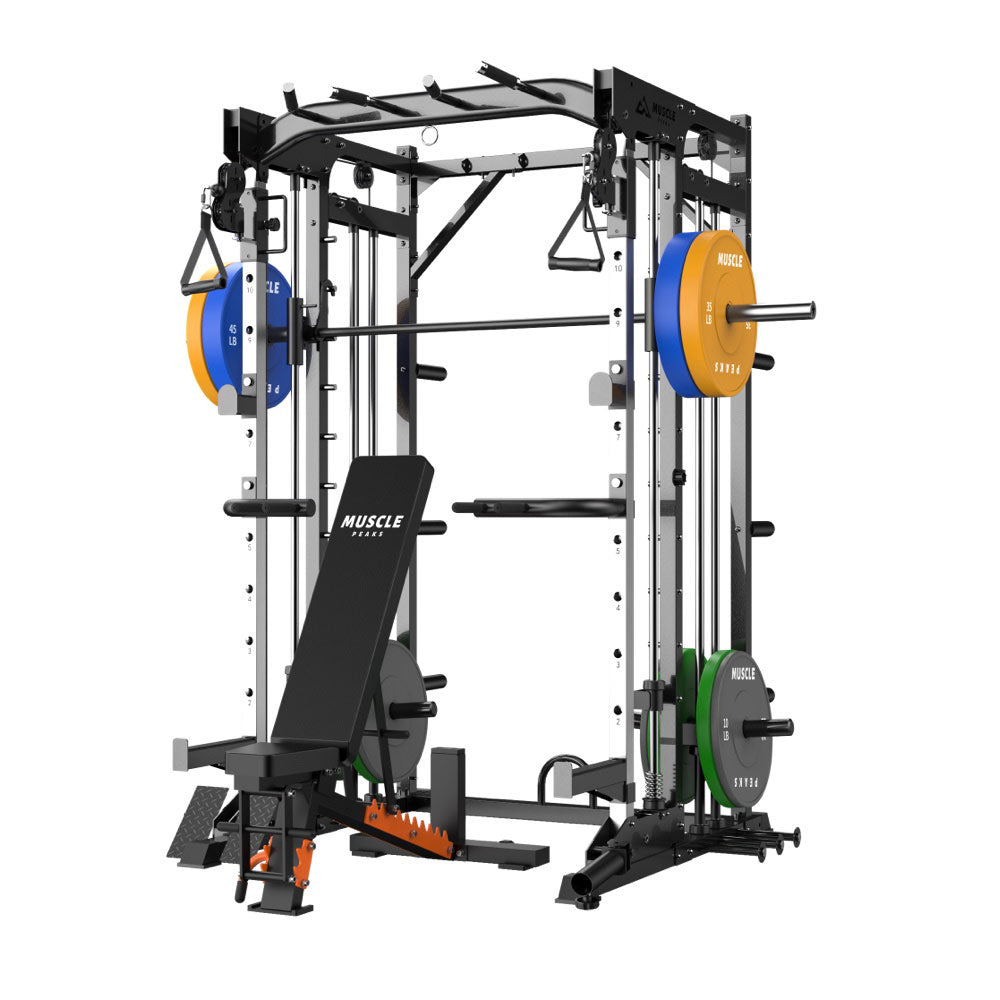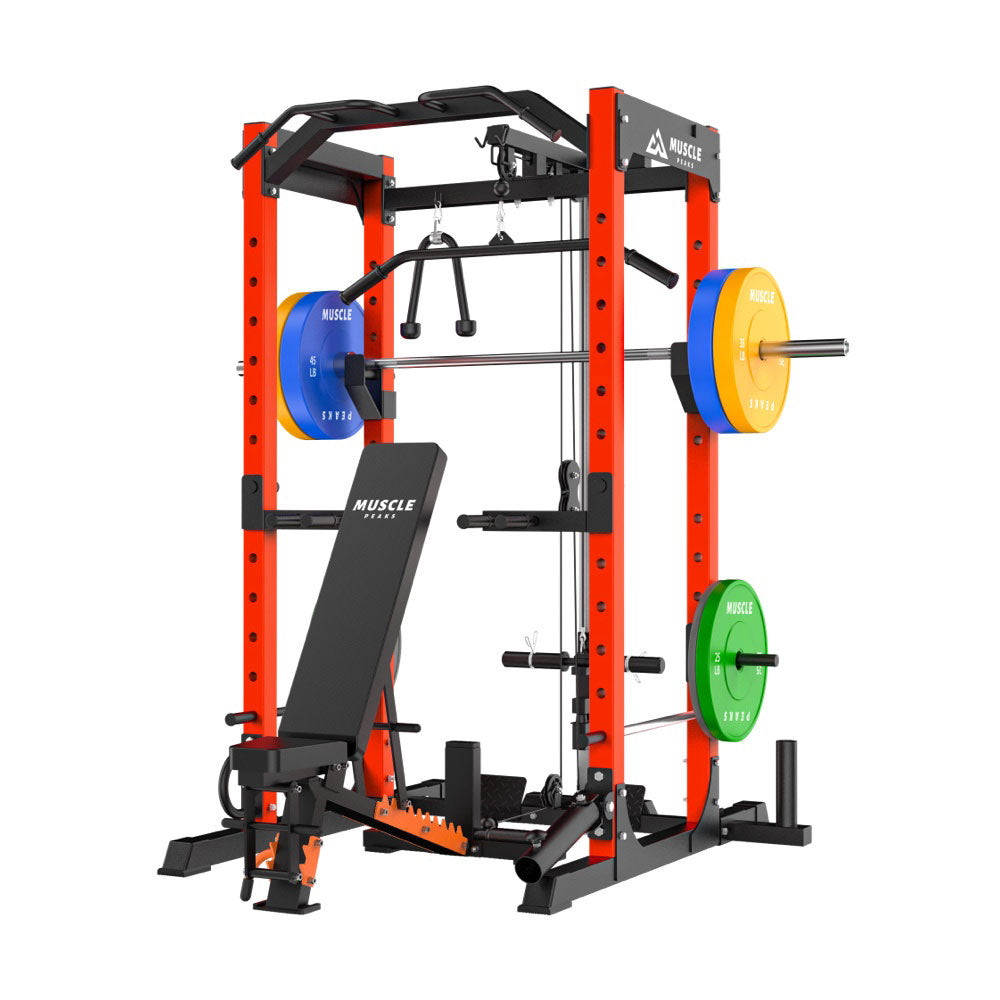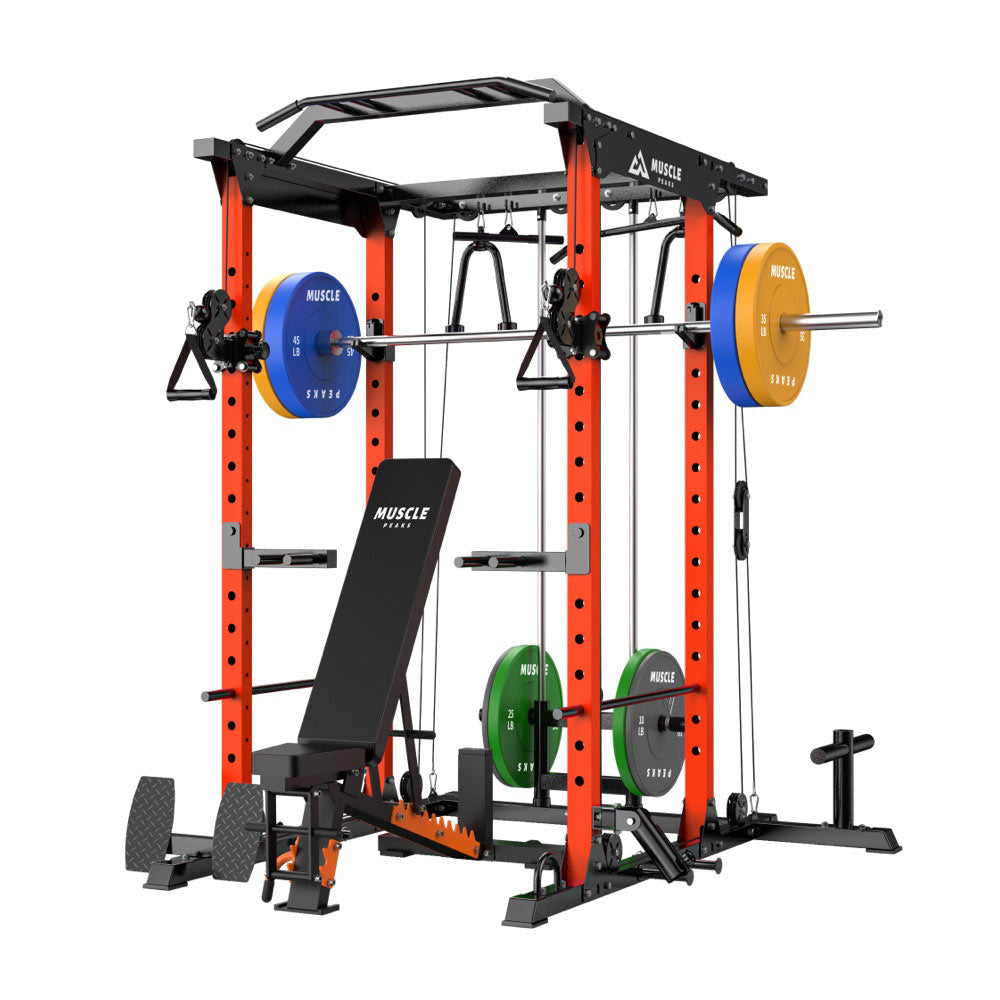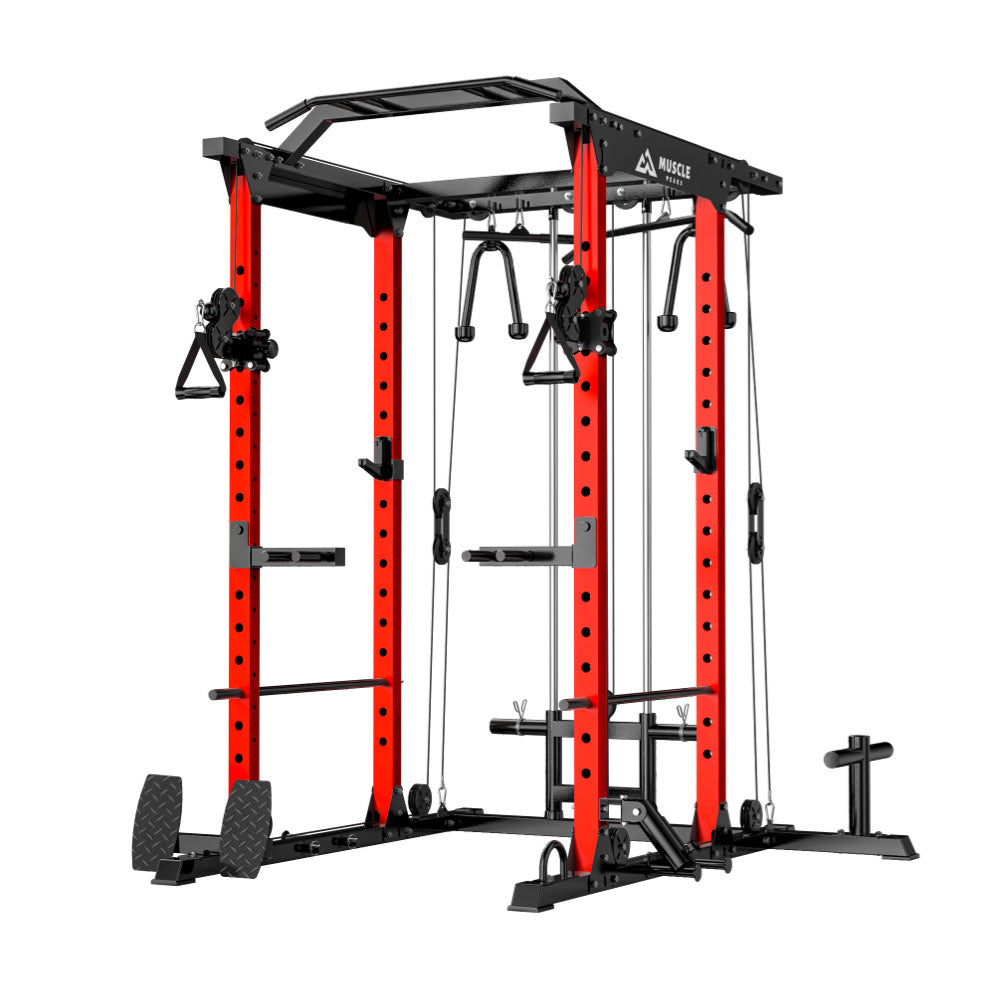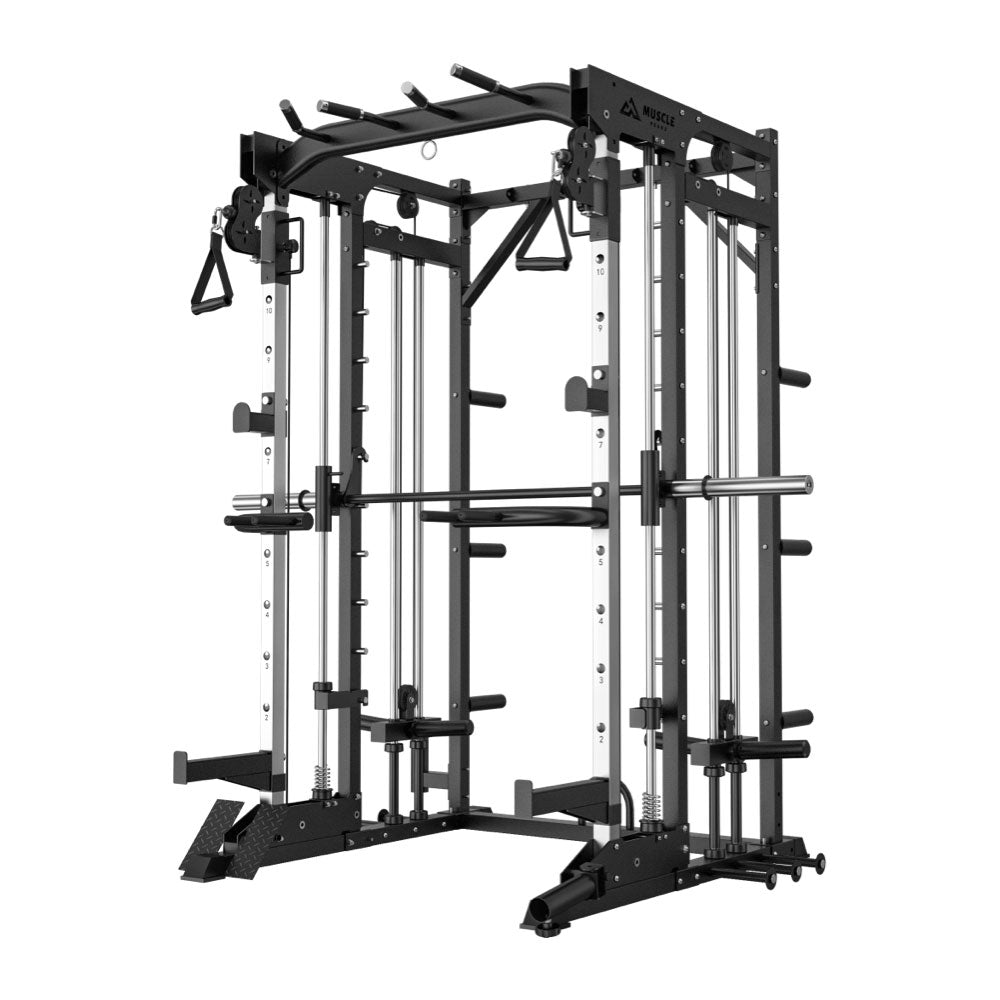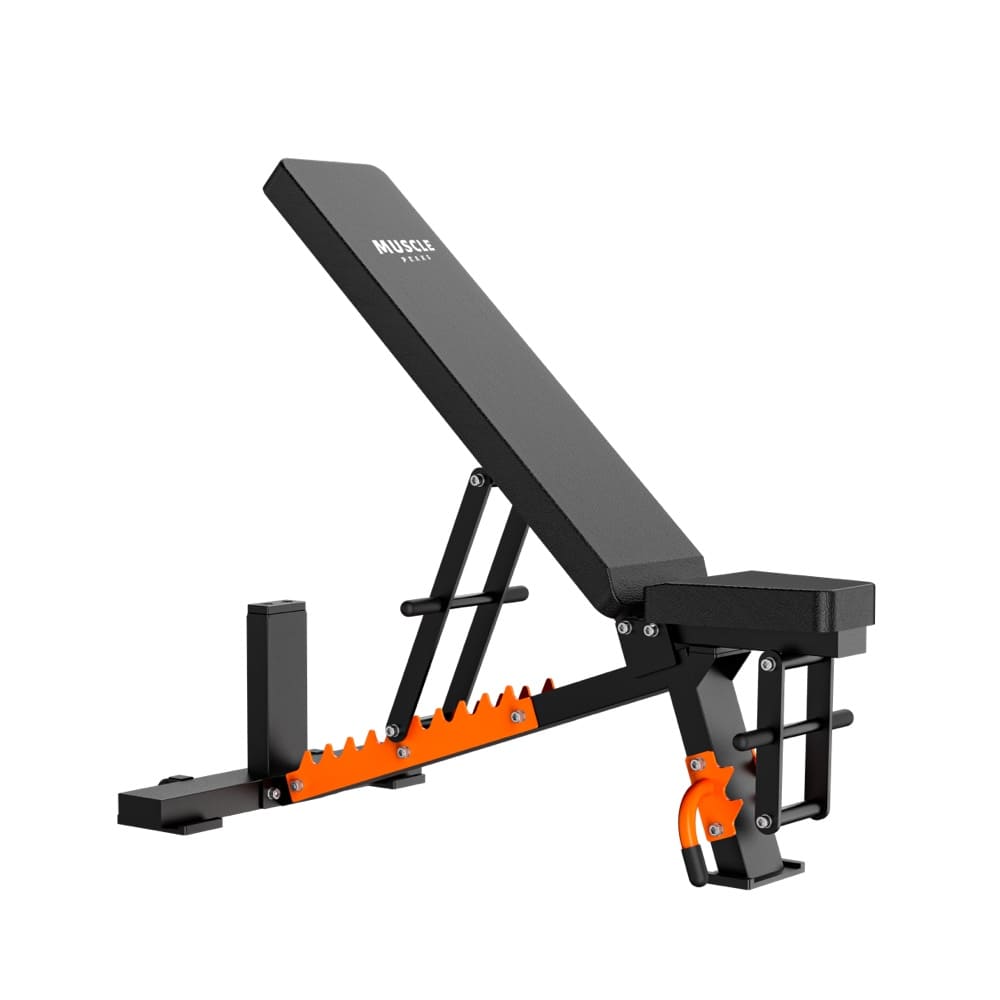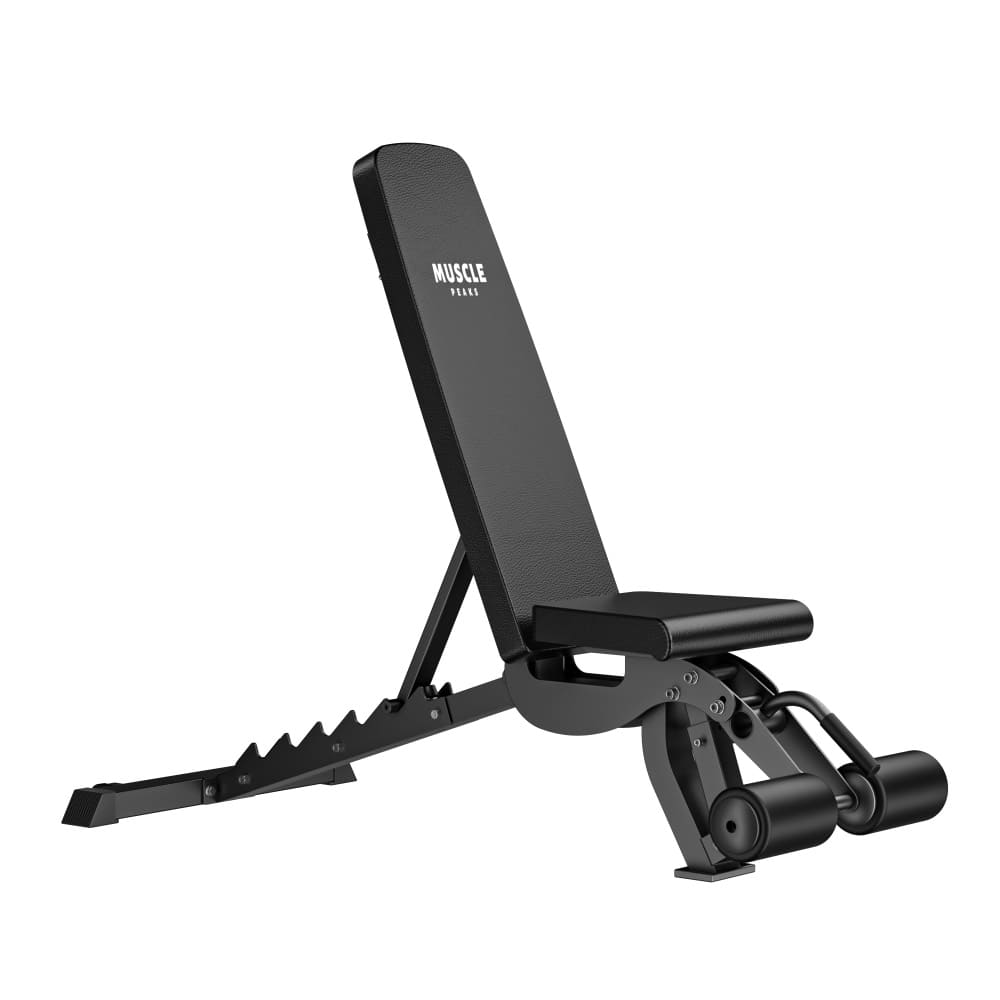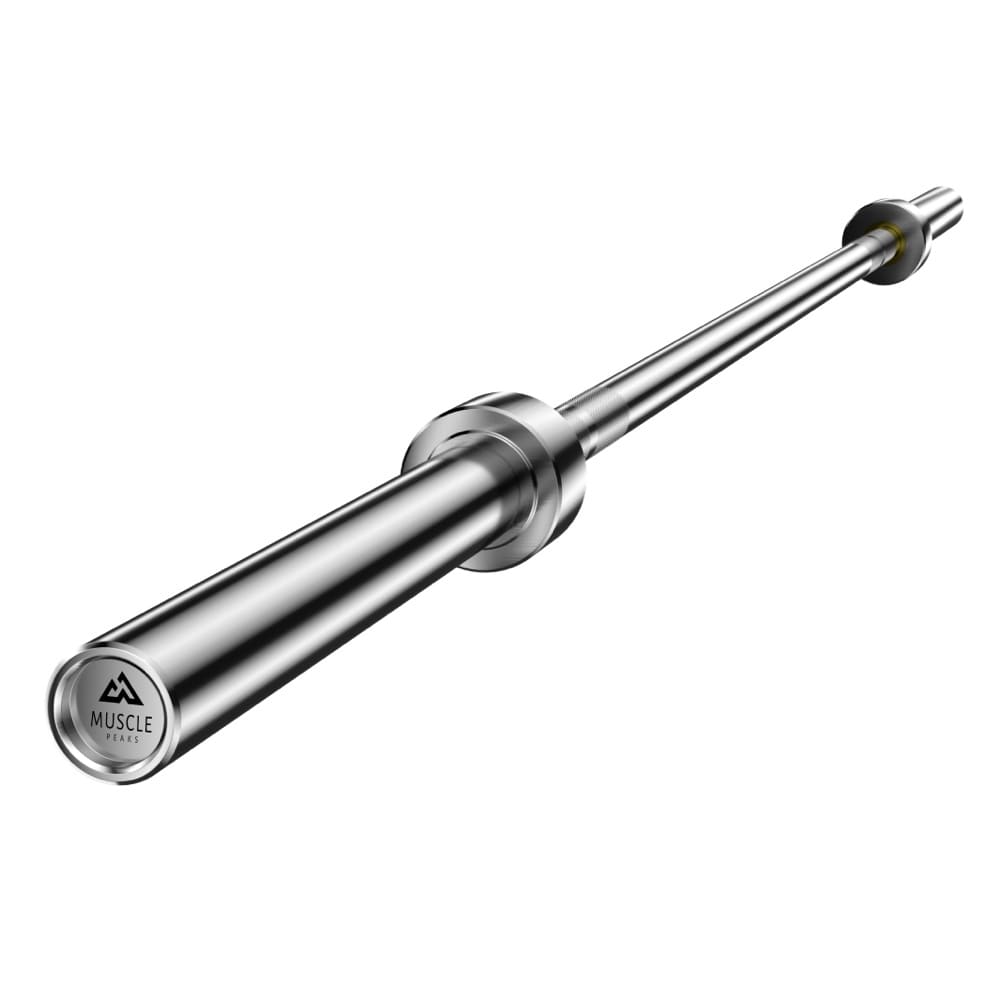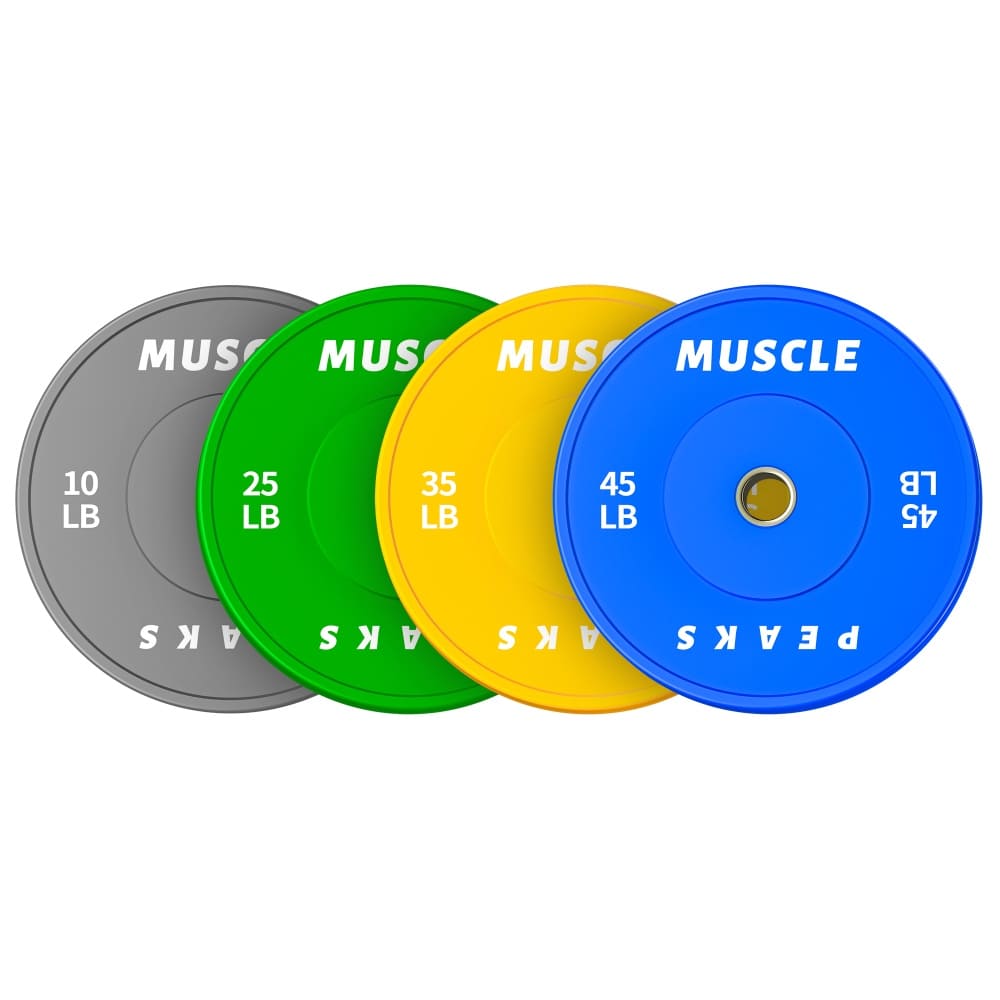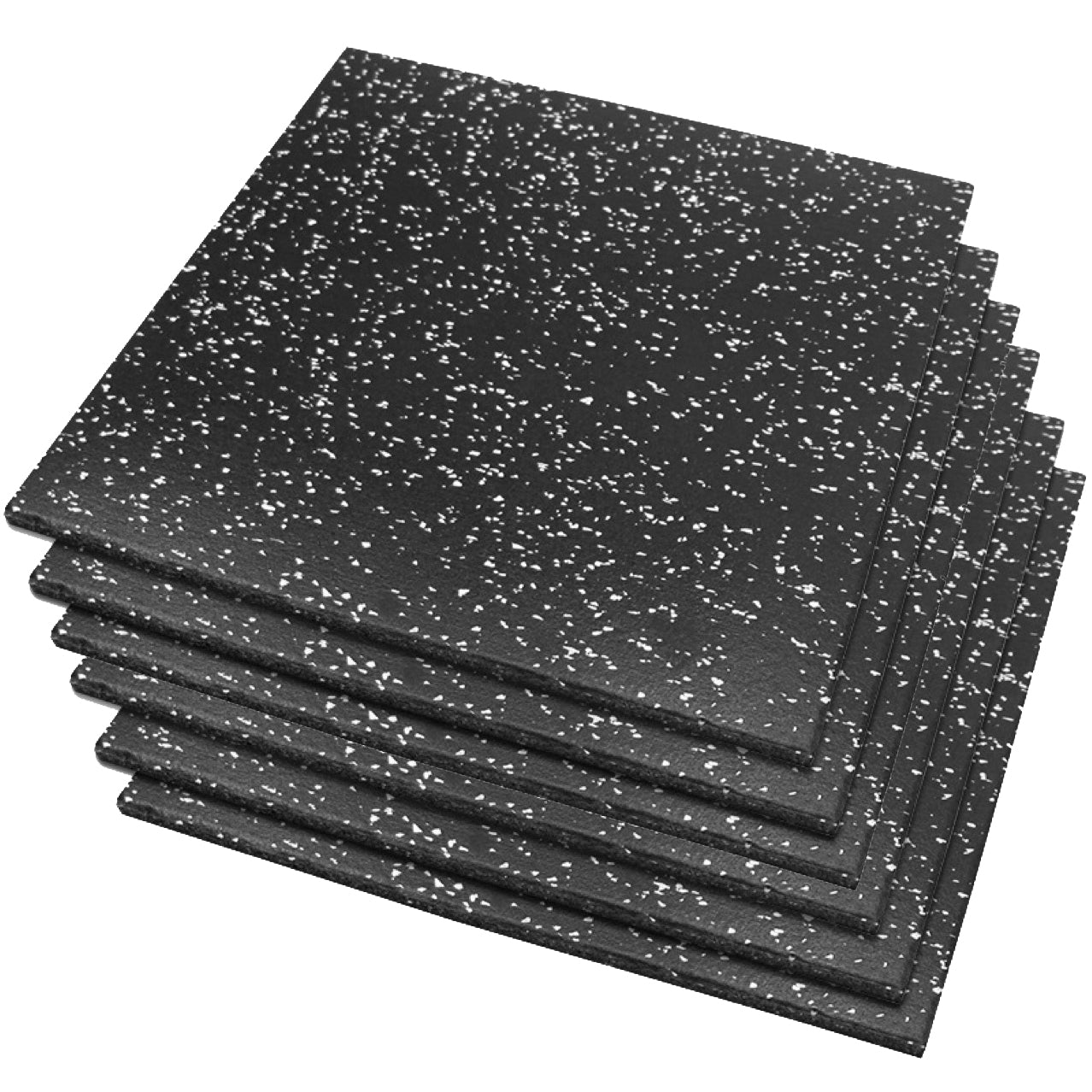Welcome to the battlefield of gains, where two heavyweight contenders – the conventional deadlift and the Romanian deadlift – square off in a clash of strength, technique, and muscle mastery. In this comprehensive analysis, we'll dissect the unique advantages, technical intricacies, and optimal scenarios for each deadlift variation, leaving no stone unturned in our quest for fitness enlightenment. Which deadlift reigns supreme in your training arsenal? Is it the raw power of the traditional deadlift or the precision technique of the Romanian deadlift? Join us as we delve deep into the world of deadlifts and uncover the secrets to unlocking your ultimate strength potential.
Understanding the Differences
The Conventional Deadlift: Unleashing Raw Power
Benefits:
The conventional deadlift stands as the epitome of full-body engagement, targeting a plethora of muscle groups with each Herculean lift. From your quads to your traps, your glutes to your core, every inch of your physique is recruited to conquer the barbell and conquer your fitness goals.
Technique:
Start with feet shoulder-width apart, barbell over mid-foot.
Grip bar with hands slightly wider than shoulder-width.
Keep back straight, engage the core, and lift the bar by driving through heels.
Stand tall, squeezing your glutes at the top, then lower the bar with control.
Technical Mastery:
Mastering the conventional deadlift is no small feat. From your grip width to your stance alignment, every detail plays a crucial role in maximizing performance and minimizing injury risk. Finding the perfect balance between power and precision is the key to unlocking your deadlift potential.
The Romanian Deadlift: Sculpting the Perfect Posterior
Benefits:
Enter the Romanian deadlift – the stealthy assassin of glute gains and hamstring hypertrophy. This sleek variation hones in on the posterior chain with surgical precision, delivering a burn that can only be described as euphoric. Say goodbye to pancake butts and hello to peach emoji perfection.
Technique:
Stand with feet hip-width apart, slight knee bend, barbell in front.
Hinge at hips, lower bar down thighs while keeping back flat.
Feel stretch in hamstrings, drive hips forward to return to start.
Embrace the burn, and repeat with control for optimal gains.
Technical Mastery:
While the Romanian deadlift shares similarities with its conventional counterpart, its focus on controlled movement and constant tension sets it apart. Perfecting the hip hinge, maintaining a neutral spine, and executing a smooth descent are the cornerstones of Romanian deadlift mastery.
Which Deadlift Is Better?
When to Choose Conventional Deadlifts
For Building Raw Strength:
The conventional deadlift is the cornerstone of strength training, renowned for its ability to build raw power and muscle mass. Engaging multiple muscle groups simultaneously, including the quadriceps, hamstrings, glutes, lower back, and core, creates a foundation of strength that translates to improved performance in other lifts and daily activities.
For Pushing Your Limits:
One of the hallmarks of strength training is pushing beyond your comfort zone, and the conventional deadlift provides the perfect platform to do just that. Whether you're striving to hit a new one-rep max or challenging yourself with heavy sets and low reps, the deadlift rewards dedication and determination with tangible gains in strength and muscle size.
For Real-World Functionality:
Beyond the confines of the gym, the conventional deadlift shines as a functional exercise that mimics real-life movements. From lifting heavy objects off the ground to maintaining proper posture during manual labor, the strength and stability gained from deadlifting carry over into everyday activities, enhancing overall quality of life and reducing the risk of injury.
When to Choose Romanian Deadlifts
For Sculpting Aesthetics:
While strength gains are a major benefit of deadlifting, many fitness enthusiasts also seek to sculpt their physique for aesthetic purposes. The Romanian deadlift, with its emphasis on targeting the glutes, hamstrings, and lower back, is a valuable tool for achieving a balanced and aesthetically pleasing physique. By isolating these muscle groups and promoting hypertrophy, it helps create defined curves and enhances the overall muscle tone.
For Perfecting Technique:
A common challenge for many lifters is maintaining proper form throughout the deadlift movement, especially as fatigue sets in. The Romanian deadlift offers an opportunity to hone in on technique and reinforce good movement patterns without the added complexity of lifting from the ground. By focusing on controlled descent and ascent, lifters can develop a better understanding of hip hinge mechanics and improve overall deadlift performance.
For Targeting the Posterior Chain:
Weaknesses in the posterior chain, including the glutes, hamstrings, and lower back, can lead to imbalances, poor posture, and increased risk of injury. The Romanian deadlift specifically targets these areas, helping to strengthen and stabilize the posterior chain for improved athletic performance and injury prevention. Whether you're an athlete looking to enhance your speed and power or a recreational lifter seeking better balance and symmetry, incorporating Romanian deadlifts into your routine can yield significant benefits.
Deadlift Safety: Protecting Your Foundation
Importance of Proper Form:
Preserving Spinal Health:
Maintaining a neutral spine position throughout the deadlift is paramount for protecting your back from injury. Excessive rounding or arching of the spine can lead to strains, sprains, and even herniated discs. Focus on keeping your back straight, shoulders pulled back, and core engaged to minimize stress on the spine.
Avoiding Overextension:
While it's essential to maintain a neutral spine, it's equally important to avoid overextending at the top of the deadlift. Hyperextending the back can place excessive strain on the lumbar vertebrae and surrounding muscles, increasing the risk of injury. Instead, focus on achieving a strong, upright posture without leaning back excessively.
Proper Breathing Technique:
Engaging the Core:
Proper breathing technique is key to maximizing stability and power during the deadlift. Before initiating the lift, take a deep breath and brace your core as if preparing to be punched in the stomach. This intra-abdominal pressure helps stabilize the spine and protect against injury throughout the movement.
Exhaling at the Top:
As you lift the barbell off the ground and reach the top of the movement, exhale forcefully to release tension and reset for the next repetition. Avoid holding your breath or exhaling too early, as this can compromise core stability and increase the risk of injury.
Gradual Progression:
Start Light, Progress Slowly:
When incorporating deadlifts into your training routine, start with a light weight and focus on mastering proper form and technique before progressing to heavier loads. Gradually increase the weight over time as your strength and proficiency improve, but always prioritize safety and form over ego-driven lifts.
Listen to Your Body:
Pay attention to how your body feels during and after deadlift sessions. If you experience sharp pain, discomfort, or excessive fatigue, it may be a sign that you're pushing too hard or using improper technique. Listen to your body's cues and adjust your training accordingly to prevent injury and promote long-term progress.
Recovery and Maintenance:
Prioritize Recovery:
Deadlifts place significant stress on the muscles, joints, and central nervous system, so it's crucial to prioritize recovery and allow adequate time for rest between sessions. Incorporate strategies such as foam rolling, stretching, and mobility exercises to alleviate muscle tension and promote recovery.
Addressing Imbalances:
Identify and address any muscular imbalances or mobility restrictions that may impact your deadlift performance or increase the risk of injury. Incorporate corrective exercises and targeted mobility work into your routine to address weak areas and improve overall movement quality.
Optimizing Deadlift Performance with Premium Equipment
In the pursuit of strength and performance, safety should always be a top priority. By prioritizing proper form, breathing technique, gradual progression, and recovery, you can minimize the risk of injury and lay a solid foundation for long-term progress and success in your deadlift journey.
To further enhance your safety and training experience, consider incorporating Muscle Peaks' premium fitness equipment into your routine.
The Muscle Peaks Power Rack provides a sturdy and versatile platform for performing deadlifts and a wide range of other strength exercises. With adjustable safety catches, pull-up bars, and optional attachments for band resistance and weight storage, it's the ultimate tool for maximizing safety and performance in your strength training regimen.
For those seeking precise control and stability during their deadlifts, the Muscle Peaks Smith Machine offers an ideal solution. With its guided vertical barbell movement and safety stops, it allows for controlled lifting with reduced risk of injury, making it perfect for beginners and experienced lifters alike.
Conclusion
In the pursuit of strength and mastery, there is no one-size-fits-all approach. Instead, it's about understanding your goals, listening to your body, and selecting the tools and techniques that best align with your aspirations. Whether you choose the conventional deadlift for its brute strength or the Romanian deadlift for its precision and aesthetics, both variations offer a pathway to success.
So, as you embark on your deadlift journey, remember to train with purpose, prioritize technique over ego, and embrace the process of continual improvement. With dedication, consistency, and a willingness to push beyond your limits, you'll unlock new levels of strength, confidence, and mastery. Embrace the journey, respect your body's limits, and lift with confidence knowing that you're safeguarding your strength and vitality for the long haul, with Muscle Peaks by your side. The iron awaits – are you ready to lift?


